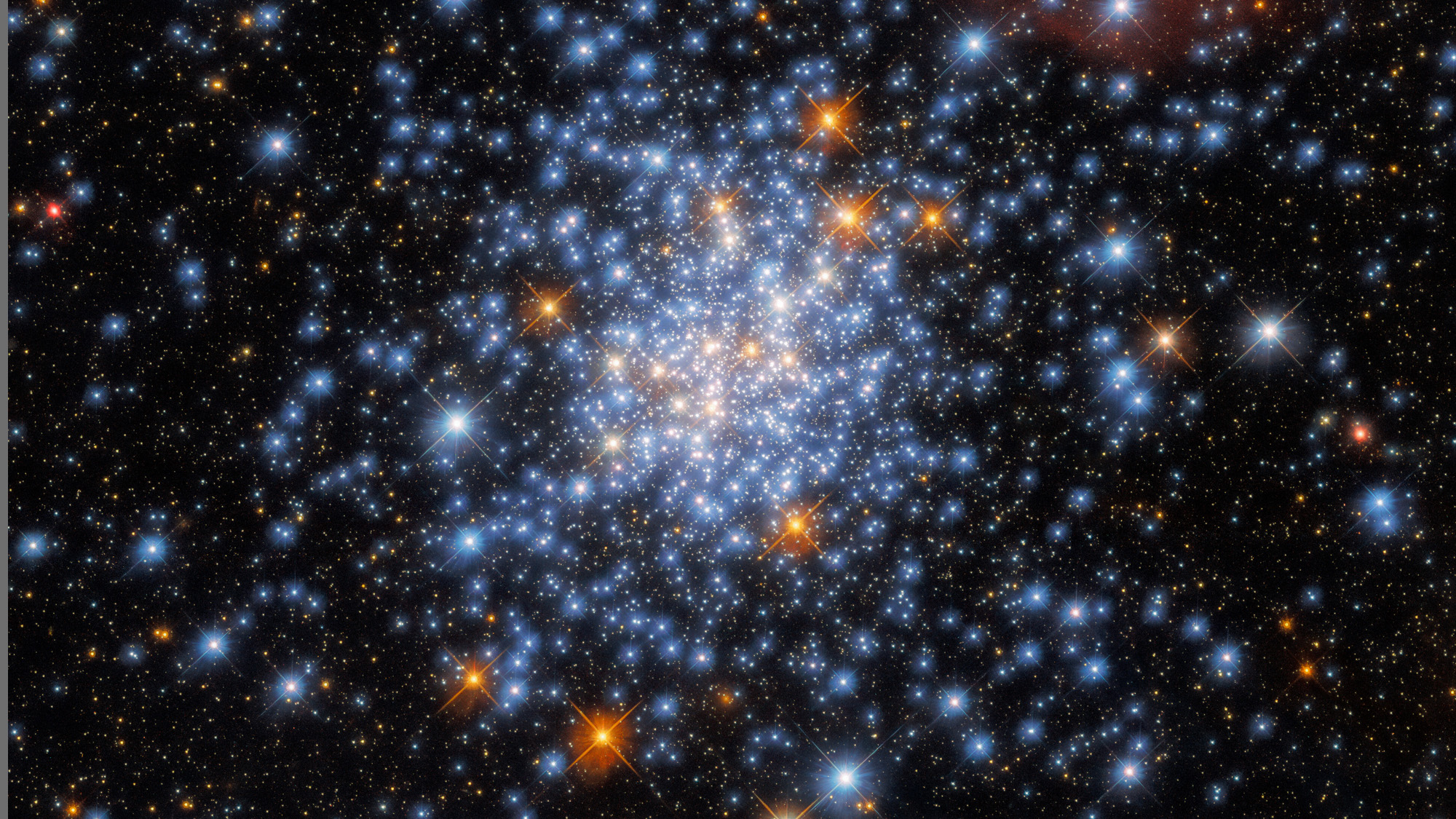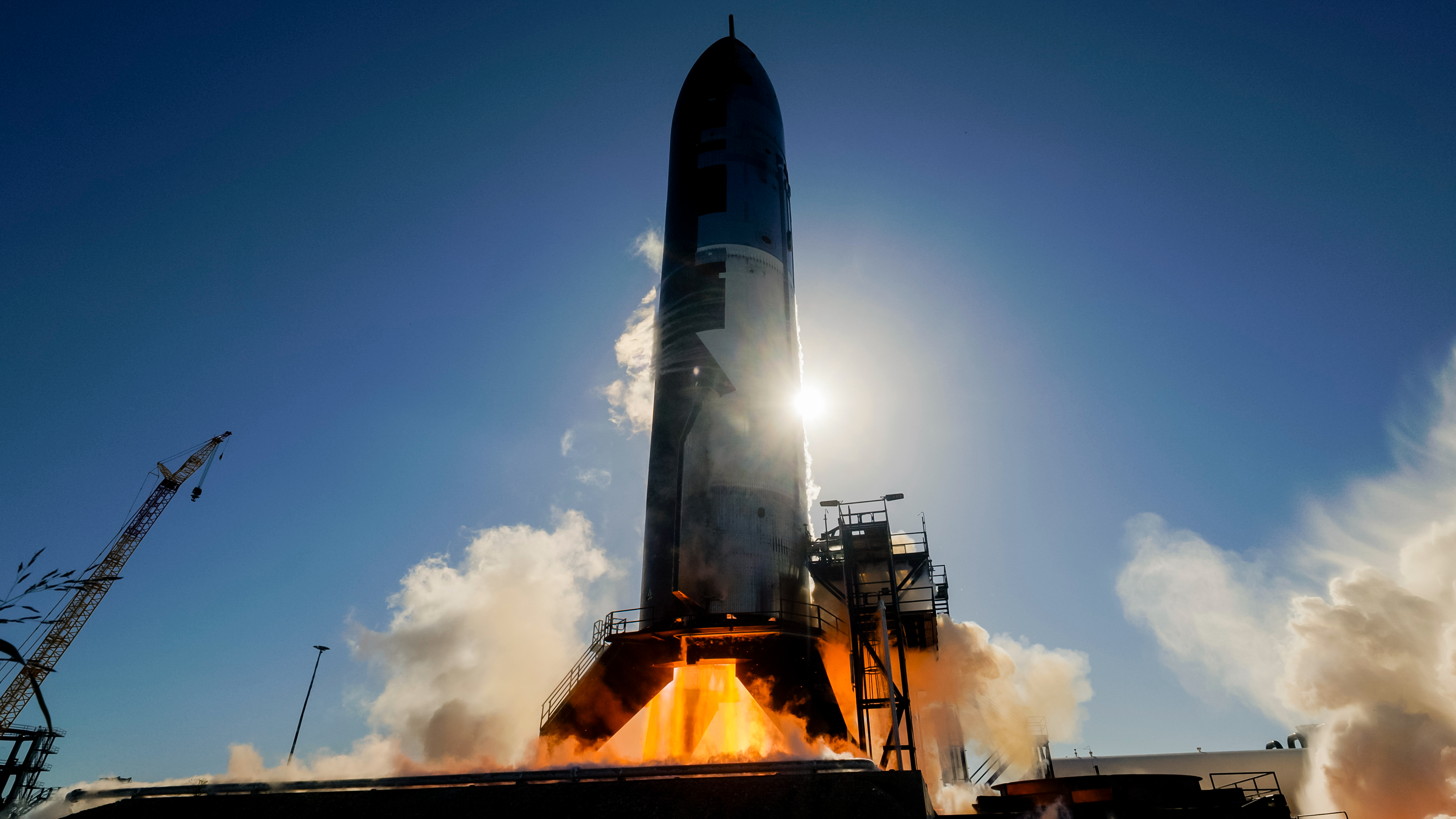Hubble telescope spots red, white and blue stars in sparkly cluster
It's a festive view for the Fourth of July.

The Hubble Space Telescope has captured a dazzling view of a distant star cluster, one filled with stars that sparkle in red, white and blue, unveiled just in time for the Fourth of July U.S. holiday.
The photo, which NASA and the European Space Agency released July 2, shows the open star cluster NGC 330, a group of stars located about 180,000 light-years away in the Small Magellanic Cloud, a dwarf satellite galaxy to our own Milky Way, in the constellation Tucana, the Toucan.
"Because star clusters form from a single primordial cloud of gas and dust, all the stars they contain are roughly the same age," NASA and ESA officials wrote in an image description. "This makes them useful natural laboratories for astronomers to learn how stars form and evolve."
Related: Blue stars: The biggest and brightest stars in the galaxy

Astronomers used archived observations from Hubble's Wide Field Camera 3 in 2018 to create this image to support two different studies aimed at understanding how star clusters evolve and how large stars can grow before they explode as supernovas.
"The most stunning object in this image is actually the very small star cluster in the lower left corner of the image, surrounded by a nebula of ionised hydrogen (red) and dust (blue)," ESA officials said in a separate image description. " Named Galfor 1, the cluster was discovered in 2018 in Hubble's archival data, which was used to create this latest image from Hubble."
Scientists studying Galfor 1 will have to wait until NASA's new James Webb Space Telescope (while will launch later this year) can observe it to determine its surrounding nebula has a bow shock feature, ESA added.
Get the Space.com Newsletter
Breaking space news, the latest updates on rocket launches, skywatching events and more!
The criss-cross patterns of the brilliant stars here are actually an artifact of Hubble itself. They're called diffraction spikes and form when starlight reflects off the four vanes supporting Hubble's secondary mirror, ESA officials said.
While Hubble's view of NGC 330 may add some sparkle to those celebrating the Fourth of July holiday, American astronauts in space have no such luck. They'll be working through the holiday weekend to prepare a visiting SpaceX Dragon cargo ship for its return to Earth on Tuesday (July 6).
The Hubble Space Telescope was launched in 1990 and captured stunning photos of the universe for over 30 years. The iconic observatory is currently offline due to a computer glitch, with NASA working to activate a backup computer in the hopes of restoring Hubble to good health.
Email Tariq Malik at tmalik@space.com or follow him @tariqjmalik. Follow us @Spacedotcom, Facebook and Instagram.
Join our Space Forums to keep talking space on the latest missions, night sky and more! And if you have a news tip, correction or comment, let us know at: community@space.com.

Tariq is the Editor-in-Chief of Space.com and joined the team in 2001, first as an intern and staff writer, and later as an editor. He covers human spaceflight, exploration and space science, as well as skywatching and entertainment. He became Space.com's Managing Editor in 2009 and Editor-in-Chief in 2019. Before joining Space.com, Tariq was a staff reporter for The Los Angeles Times covering education and city beats in La Habra, Fullerton and Huntington Beach. In October 2022, Tariq received the Harry Kolcum Award for excellence in space reporting from the National Space Club Florida Committee. He is also an Eagle Scout (yes, he has the Space Exploration merit badge) and went to Space Camp four times as a kid and a fifth time as an adult. He has journalism degrees from the University of Southern California and New York University. You can find Tariq at Space.com and as the co-host to the This Week In Space podcast with space historian Rod Pyle on the TWiT network. To see his latest project, you can follow Tariq on Twitter @tariqjmalik.
